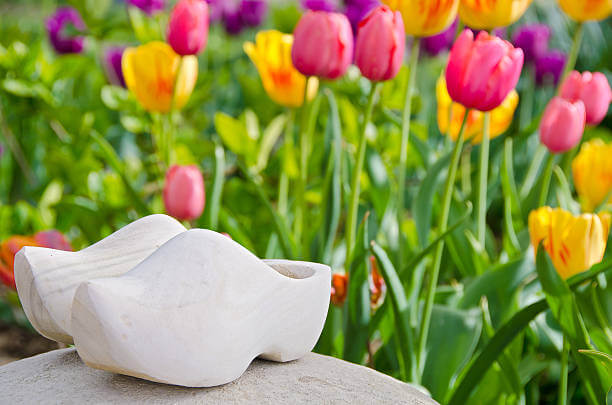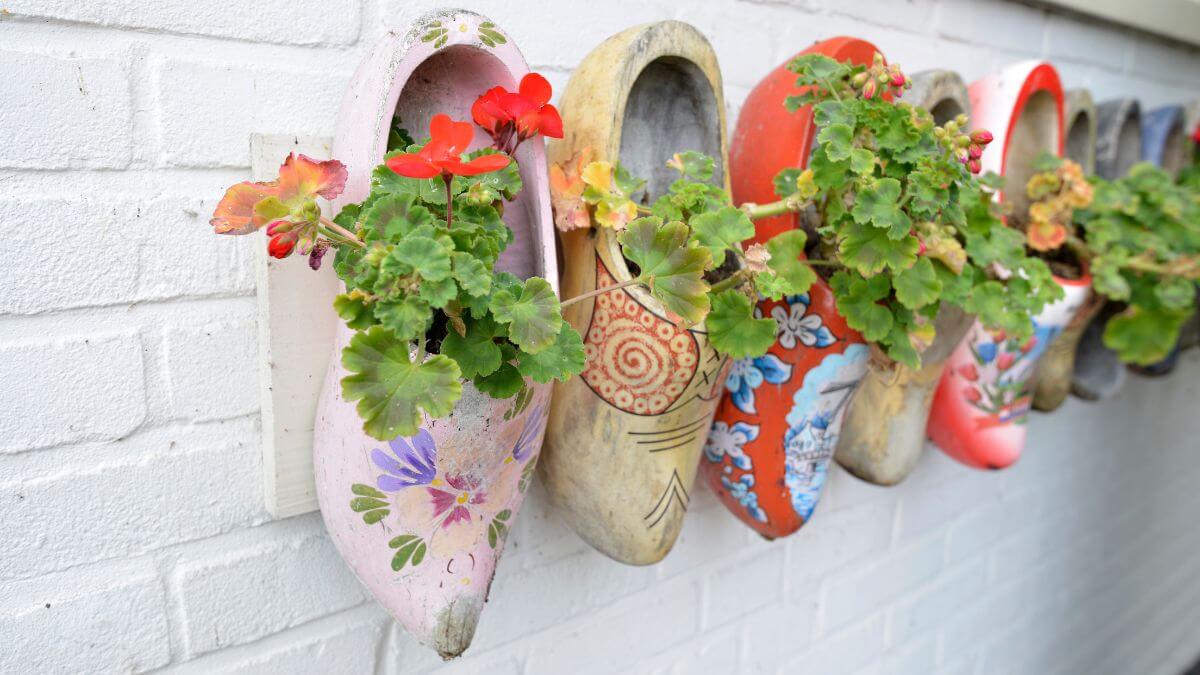Wooden shoes, like tulips and windmills, are a unique Dutch icon. You may be wondering why the Dutch were so fond of this footwear. So I donned my wooden shoes to learn more about wooden shoes in the Netherlands.
The Dutch wore wooden shoes because they were comfortable, long-lasting, inexpensive, water-resistant, well-insulated, and provided enough foot protection. As a result, wooden shoes were ideal for farmers and manual laborers, who made up a sizable portion of the population at the time.
Continue reading to see why the Dutch valued their comfortable, water-resistant, and protective wooden shoes so much.
The Origins of Dutch Wooden Shoes

The Dutch did not invent the wooden shoes but rather modified a Roman shoe to their environment and tougher weather conditions.
The first wooden shoes were most likely inspired by the “calceus shoes” worn by the Romans some 2000 years ago. These Roman “calceus shoes” have a wooden sole and leather straps on top, similar to sandals. The Dutch adopted this Roman concept by using simply wood to shield their feet from wetness and provide more comfort in their colder climate.
The earliest entirely wooden shoes discovered in the Netherlands date back to 1230 and were discovered during an archeological dig at the Nieuwendijk in Amsterdam. However, entirely wooden shoes were most likely created and used in the Netherlands far earlier.
Are Dutch Wooden Shoes Convenient?

From personal experience, I can promise you that wooden shoes are really pleasant to wear once you get used to them. On grass or countryside, wooden shoes are more comfortable than on paved roads. This makes them ideal for working in the garden, especially when the grass or farmland is damp.
Wooden shoes indeed keep your feet warm and cool in the summer. I wear my wooden shoes with socks to protect the skin on my feet and to add comfort and warmth.
It makes no difference if your wooden shoes get wet and filthy because you can leave them at the front door and stroll into the house on your socks. As a result, many farmers have their coffee breaks in socks because their wooden shoes are left outside.
Wearing thick socks greatly improves the comfort of your wooden shoes. A Dutchman is rarely seen wearing wooden shoes without thick socks.
What is the significance of wooden shoes in Dutch culture?

When wooden shoes first debuted centuries ago, they were worn by farmers, fishermen, and laborers all over Europe. After that, wooden shoes became popular and were worn by everyone and everyone. So, what is it about wooden shoes that make them linked with the Dutch?
For ages, Holland has been a trade nation. The Dutch explored the world, bringing diverse trade products with them. The wooden shoe was one of these products. This is why people in other countries assumed the wooden shoes originated in Holland.
Dutch wooden shoes are distinguished by their distinctive painting and design. The classic Dutch wooden shoe is yellow and embellished with tulips or windmills. The industry is progressively meeting the tourist or consumer’s wants.
Do the Dutch still walk around in wooden shoes?

Wooden shoes are no longer as common in the Netherlands as they once were. However, you will still witness Dutchmen wearing wooden shoes in the countryside.
Some farmers continue to wear them because they are extremely useful on damp and rainy farmland and are water-resistant. It makes no difference whether they get soiled because they are much easier to clean than leather shoes. I’m not a farmer and don’t live in the country, but I have wooden shoes for working in the garden.
Modern wooden shoes and clogs with a leather top for added flexibility and comfort are also available. These clogs are both comfy and shock-absorbing. People with physically demanding vocations, such as nurses, cooks, and butchers, prefer these modern clogs. These professionals wear them daily for comfort, posture correction, and shock absorption.
How Do Dutch Wooden Shoes Get Their Shape?

If you want to learn how Dutch wooden shoes are created, watch the YouTube video below. In just a few months, it had acquired over 700,000 views.
It’s an intriguing video that takes you inside a traditional wooden shoe factory in Marken, The Netherlands, that still employs a steam engine to make wooden shoes. That is really rare these days and is worth investigating.
A pair of wooden shoes ranges in price from € 10 to € 25, depending on the decorations and where you get them.
More pricey are wooden shoes with elaborate embellishments. If you want to get a good deal on wooden shoes, go to a regular garden store rather than a tourist shop in the city center.
What Size Should Wooden Shoes Be?

If you buy wooden shoes for yourself, ensure you get the suitable size for your feet.
When trying on several sizes of wooden shoes, use thick socks. When you’re not used to walking in wooden shoes, thick socks will make it much more comfortable. In the wooden shoes, move your feet as far forward as possible. If your index finger fits perfectly between the rear of your foot and the wooden shoe, you’ve found the right size.
If your wooden shoes are the perfect size for your feet, you will be able to effortlessly slip in and out of them and walk comfortably in them.
Where Can You Find Dutch Wooden Shoe Factories?
If you want to see a traditional wooden shoe factory in The Netherlands, there is still approximately a dozen of them in operation. To learn more about them, visit their websites on the map below.
They usually feature demonstrations and a shop where you can purchase your pair of wooden shoes to take home with you.
10 Most Interesting Dutch Secret Places You Didn’t Know Existed

We visited a shoe factory while in the Netherlands and the lady said the reason they wore wooden shoes was because leather shoes rotted quickly due to wet soil. She said the wooden shoes were made from popular, trees and willow trees because they were water resistant. She said the shoes were made a size larger because the wool socks were for padding and regular socks to keep your feet and legs from itching from the wool socks.